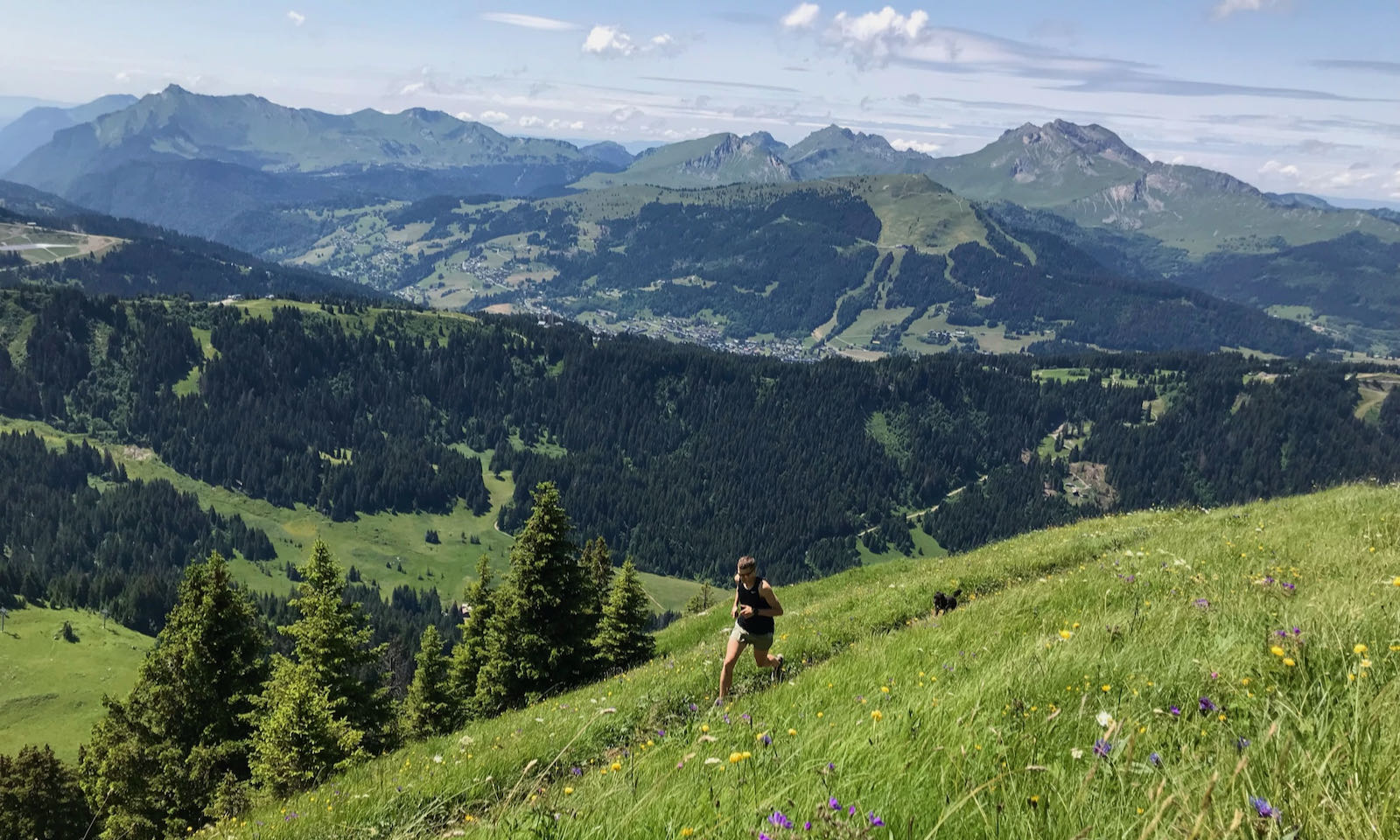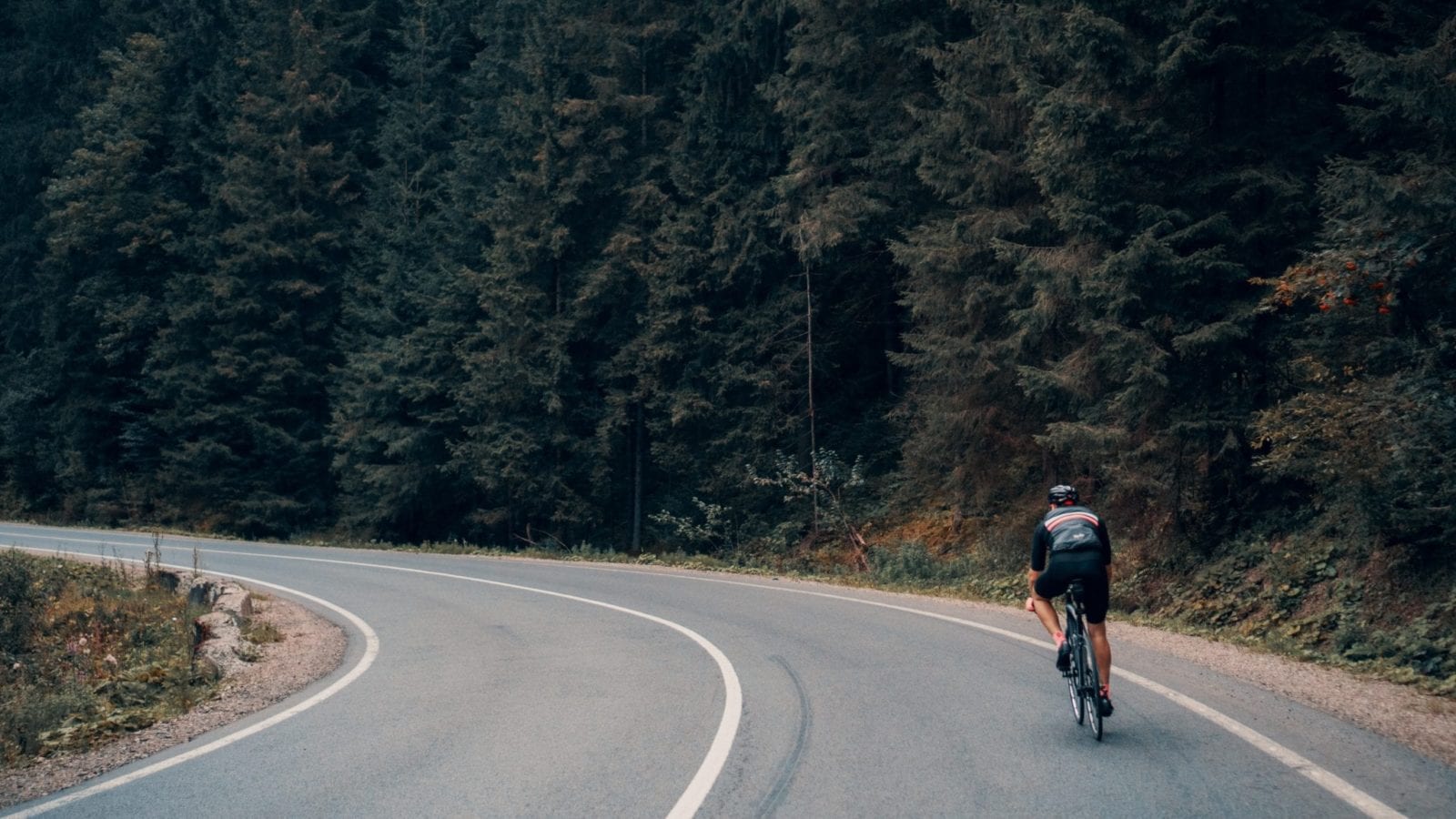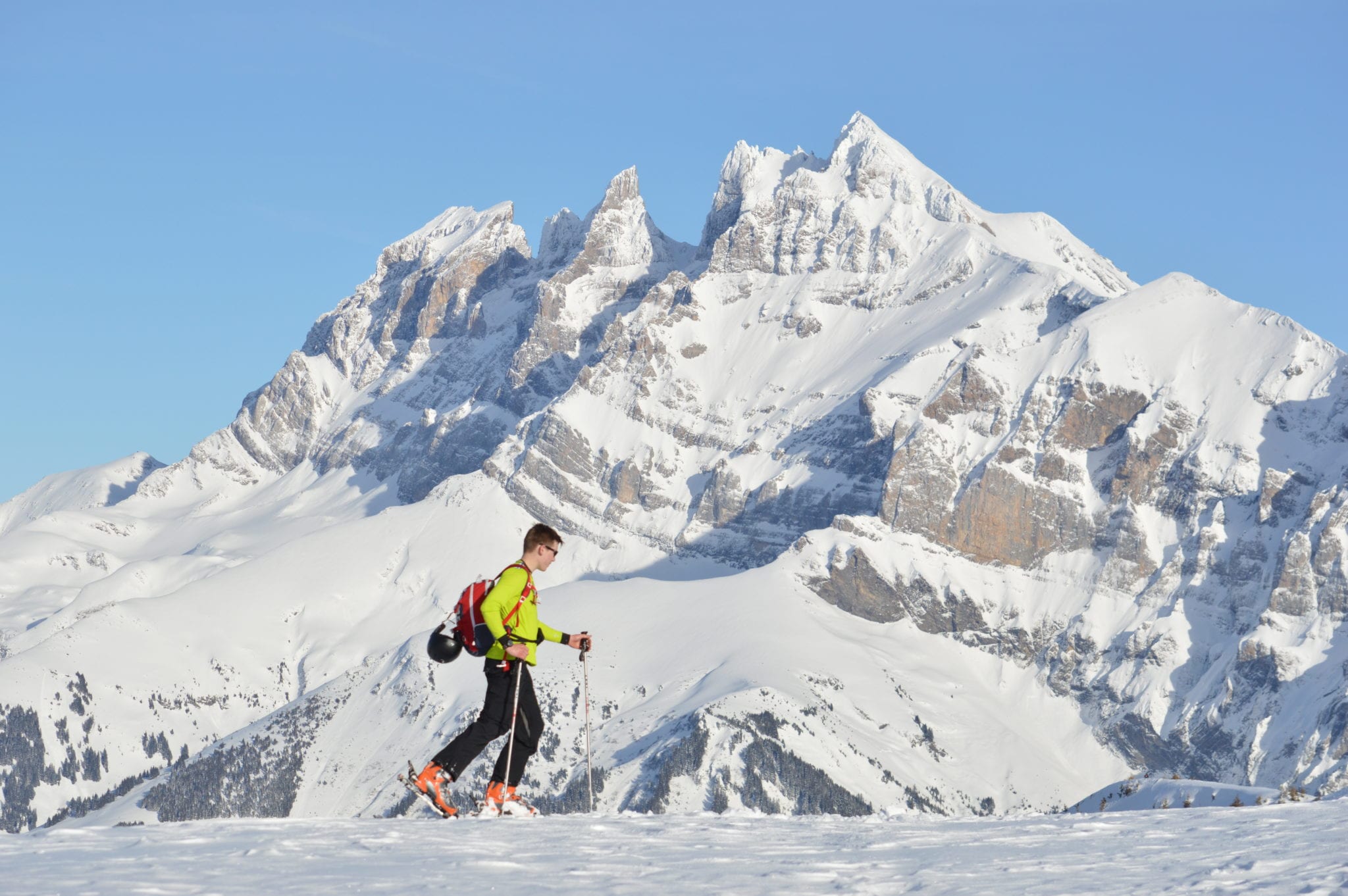THE SKIOLOGY PRE-SKI SEASON GUIDE
“The best exercise for skiing is that that you can do easily and regularly” with that in mind, we are going to look at running and cycling for ski fitness focusing on technique.
General Rules
The best exercise for skiing
The NHS recommend – depending on your age – that you should take 75 minutes of vigorous aerobic activity or 150 minutes of moderate aerobic activity per week and strength exercises on 2 days.
The easier we make something to do, the more likely we are to do it.
So here’s a goal for you: 25 minutes vigorous aerobic 3 times a week (Monday, Wednesday, and Friday) and strength days (Tuesday and Thursday).
To assure that it is done, make it the first thing you do that day. You will come back from your exercise feeling like you conquered you day before you have even started it.
If you have difficulty getting up early in the morning (we’ve all been there) remember the new day starts the night before so practice setting an alarm to go to bed earlier. We recommend an alarm to go to bed at 9.30pm asleep by 10pm and up by 6am to allow time for exercise before breakfast and work.
Running
The best exercise for skiing

There is a correct way to run.
Former Resort Manager Sam introduced us to the book Born to Run, an inspirational study of man’s most ancient pursuit. The author, under the tuition of some of the worlds best runners, compiles a checklist for the best running technique. We have fused this with Tim Ferris’ fine-tuning points from his book the 4-hour body, under the lead of the same athletes and also updated it with learnings from The Lost Art of Running.
2019 method *updated 2021 method is lower down*
-
Back straight
-
Knees bent and driving forward: use gravity for forward motion instead of muscular push off. Lean and fall like a tree rather than bending at the hips.
-
Heels flicking back: pull each foot off the ground and towards your buttocks.
-
Maintain 180 steps per minute: do it by listening to music at that pace and running to the beat, Spotify has some playlists that can help out here.
-
** (see note below, this should not be attempted without transitional guidance if you are not already running like this) Land on the balls of your feet. This will give you a bouncy feeling and a natural leg lift on each step
Update additionally, from the “Lost art of running” which has so much more than the following…
- Running tall, posture upright. Optimising facial system to create elastic recoil and energy. “How the facial system rejuvenates is up to us. If we remain slumped at our desks and craning our necks to look at our phones all day then the facial system will break down and adopt the same posture.” “How we stand when we make a cup of tea is how we run”. “If we sit, stand and walk beautifully we have a much better chance of running beautifully”
- Keep your head up, eye on the horizon. You don’t want to drag the weight of you. The average head weighs 5kg, and each extra 2 cm of forwarding tilt adds an extra 5kg of pressure onto the spine, run tall.
Tripod landing. Land with your foot under your torso rather than out in front of you. 180 cadence from the height of stride, allowing legs time to turn over. Reduces ground contact time and heel striking. “Feet landing underneath him was the best way to achieve this putting more height in the stride”. “Allowing time to create flow” - Arms driving forward in unison with legs.
- Leaning forward from ankles “have a subtle lean that feels like it comes from the ankles creating a bow with our centerline. The more we lean the more our stride opens up to accommodate the lean” “we can use it as a gearing system lean more and we speedup”
- Breathing through mouth not in unison with running.
- Positive self-talk. “Perception of our movement has a profound impact on the way we move. If we think that we are bored or tired we slump, if we think we are tall, graceful, elastic, fluid, synergistic and connected we are far more likely to display those attributes.”
2021 method
To fuse this all together and make it as short as possible
- Run tall with a straight back
- Try to maintain a pace of 180 bpm
- Drive arms with legs however don’t synchronise breathing.
- Lean forward from the ankles.
- Positive self talk
**The book’s are both all about forefoot running facilitated by shoes with flatter soles also know as barefoot running shoes. If the above works for you and you are interested to take it to the next level ‘Born 2 Run 2’ has an excellent transition programme. We highly recommend it and would not recommend trying the transition to a different foot strike without it, unguided is the cause of many sometime unrecoverable injuries.
Like with everything new, go easy. Maybe start with a 10-minute run rather than a 25. From experience, if I have not run for a while and go straight out for a road run, I will get shin splints and not be able to run for a week.. so consider what surface you run on too.
If you decide that you do want to try these tips, try one at a time rather than all at the same time. For example, go out for 1 x 25-minute run and focus on running with a straight back, get it into your muscle memory and then try the next tip on your next run.
In Born to Run we learn from the ancient running tribe called Tarahumara to “Think Easy, Light, Smooth, and Fast. You start with easy, because if that’s all you get, that’s not so bad. Then work on light. Make it effortless, like you don’t give a darn how high the hill is or how far you’ve got to go. When you’ve practised that so long, that you forget you’re practising, you work on making it smooooooth. You won’t have to worry about the last one – you get those three, and you’ll be fast.”
Cycling
The best exercise for skiing

Intro from Sam @ Slipstream Adventures
(Previously Skiology Resort Manager)
Cycling is a great way to prepare for your ski holiday as it builds the strength, endurance, and the fitness needed for a full day on the slopes. It’s an easier sport than running to get the sort of duration you will experience with a long day on the mountain. Cycling builds strength in the quads, hamstrings, and calves all of which are the same muscles you rely on for skiing. Additionally, especially when climbing out of the saddle, cycling improves balance, core stability, and flexibility, all of which contribute to better control and increase your safety while skiing. Finally, a high volume of cycling, so long as you’re bike position is set up correctly, is very low-impact on your body therefore your injury risk is lower than in most sports. This is key to preventing you from getting injured on your path to ski holiday fitness.
There is also a correct way to set up your bike for both efficiency and injury avoidance. The easiest way would be to have a professional do it for you. You can generally make adjustments to:
-
Saddle height: to help you get the most the out of your leg power
-
Saddle position (KOPS): to put your knees over the pedal spindle.
-
Handlebar height & position: to help you get the ergonomics right and avoid injuries like neck pain.
Safety first. It would be counterproductive to get injured in your quest to get ski fit so before you get on your bike make sure that you do the M safety check.
Cyclingweekly has a great guide on how to set up your bike.
Strength Exercises
The best exercise for skiing
Muscle-strengthening exercises are counted in repetitions and sets. A repetition is 1 complete movement of an activity, like a biceps curl or a sit-up. A set is a group of repetitions. For each strength exercise, try to do:
-
At least 1 set
-
8 to 12 repetitions in each set
-
To get health benefits from strength exercises, you should do them to the point where you struggle to complete another repetition.
Here’s more tips from Sam, our previous Resort Manager and ultra marathon runner, best tips:
-
“Weighted squats and weighted lunges
-
Sit-ups and back raises
These are the four exercises that tax the muscles you will need for your ski holiday. Squats and lunges to give you a full quad workout which can be completed in a few minutes and sit-ups and back extensions because your core holds your body together when the slope under you varies.
- Squats you should try: see how many sets you can do, then practice sets totalling to a multiple of 3 i.e 3, 6 or 9.
- Lunges: 10 lunges weighted, drop the weight, 10 lunges back to where you started then walk back to the weight and start your second set. The weight makes it quicker for your legs to feel the burn rather than spending a lot of time on the exercise. It also simulates the feeling of being out here at altitude with all your ski equipment on. Find the heaviest weight you can hold (shopping bags) and use that as the household dumbbell. The important thing with squats is that you go all the way down. Keep your legs and shoulder width apart then go down until your quads touch your calves. Holding a broomstick while doing it may help keep your posture correct.
- Sit ups 3 sets.
- Back extensions 3 sets.
Effectively you are working your legs and core. If you are unfamiliar with the above exercises the NHS has some great 10-minute workout videos for core and legs.

Tips and Tricks
The best exercise for skiing
“What gets measured gets managed”
- Invest in a Fitbit or Sports Watch like a Garmin, here’s some benefits: 1. It features a silent vibrating alarm so that you don’t wake anyone else up in the house for your new early morning rituals 2. You can set exercise goals and records on the device so that it will monitor your progress for you.
Be accountable: “If you really want to do something tell 10 people you are going to do it” you won’t want to loose face if you don’t!
- If you want to check that we are taking our own medicine then you can follow us on Strava here. Strava links with your Sports Watch to publicise your activity. So this is us telling 1000+ readers that we are committed to the programme.
If this is not enoguht, here’s a few from our favourite personal trainer and guest, Issi, who runs ski fit classes in Surrey (which we highly recommend):
- Find a RELIABLE training buddy to motivate you.
- Set goals.
- Ask yourself why you are doing it and remind yourself regularly that it’s for something positive….remember the psychological side of exercising, the mind is stronger than the body motto. Obviously listen to your body and if you hurt … STOP!!! Find safe exercises for your body.
- Don’t leave it to the last minute to get ‘Ski-Fit’…. like running a marathon, you don’t want to collapse at the end.. you want to be able to go out and party to celebrate! (my analogy of apres-ski )
- Book your holiday early and start your training that day!
- Legs are very important but don’t forget the rest of your body, you will need strength to carry your equipment, to push yourself up off the floor (either from falling or drinking) and if you do fall you want to do plenty of upper strength training as well to protect those bones and muscles.
- Do plenty of core, hip stability and balance work. Hip bridges are vital, hip hitching is great for stabilising the knee. Balancing and standing on one foot can be done anywhere!
- Do exercises whilst cleaning your teeth, waiting for the kettle to boil, standing over the kids whilst they clear their mess up, waiting for the bus, a taxi, chatting with house guests (they’ll soon join in when they know what you’re doing).
- Yoga is great for stretching and opening the hips… find a fun class with a teacher who likes to ski possibly. Stretching is essential!
- If you have an existing injury incorporate any rehab exercises into your routine, this will ensure that you have created the needed stability in the specific area greatly reducing the risk of re-injuring the same joint/muscle.
- Get a PT or sign up to a course of classes.
Conclusions
The best exercise for skiing
Exercising won’t make you a better skier necessarily but it can prevent you from injuring yourself and help you enjoy a full day skiing with your new found stamina and strength.
This course will assist in your ski stamina helping you catch your breath back quicker and increasing your muscles too. You can monitor your progressions by using the same cycling or running route, when you are half way turn around and come back, within a few weeks half way will get further and easier away so you know you are progressing.
Don’t forget to ease into your chosen exercise. If you have any further tips we would love to know.